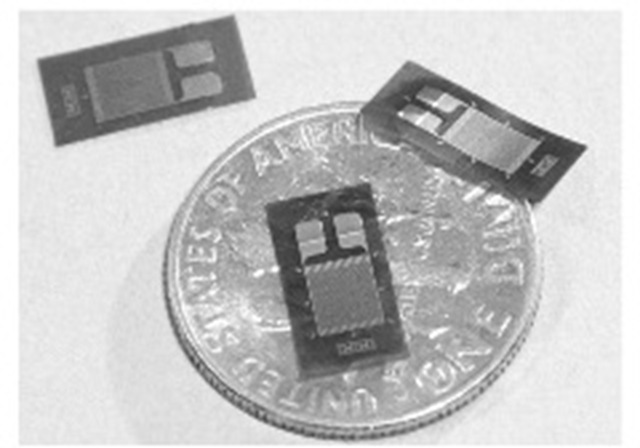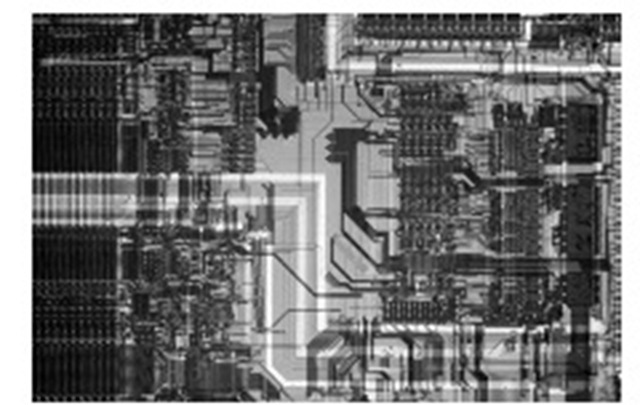The invention: Also known as a microprocessor, a computer chip combines the basic logic circuits of a computer on a single silicon chip.
The people behind the invention:
Robert Norton Noyce (1927-1990), an American physicist William Shockley (1910-1989), an American coinventor of the transistor who was a cowinner of the 1956 Nobel Prize in Physics
Marcian Edward Hoff, Jr. (1937- ), an American engineer Jack St. Clair Kilby (1923- ), an American researcher and assistant vice president of Texas Instruments
The Shockley Eight
The microelectronics industry began shortly after World War II with the invention of the transistor. While radar was being developed during the war, it was discovered that certain crystalline substances, such as germanium and silicon, possess unique electrical properties that make them excellent signal detectors. This class of materials became known as “semiconductors,” because they are neither conductors nor insulators of electricity.
Immediately after the war, scientists at Bell Telephone Laboratories began to conduct research on semiconductors in the hope that they might yield some benefits for communications. The Bell physicists learned to control the electrical properties of semiconductor crystals by “doping” (treating) them with minute impurities. When two thin wires for current were attached to this material, a crude device was obtained that could amplify the voice. The transistor, as this device was called, was developed late in 1947. The transistor duplicated many functions of vacuum tubes; it was also smaller, required less power, and generated less heat. The three Bell Laboratories scientists who guided its development—William Shockley, Walter H. Brattain, and John Bardeen—won the 1956 Nobel Prize in Physics for their work.
Shockley left Bell Laboratories and went to Palo Alto, California, where he formed his own company, Shockley Semiconductor Laboratories, which was a subsidiary of Beckman Instruments. Palo Alto is the home of Stanford University, which, in 1954, set aside 655 acres of land for a high-technology industrial area known as Stanford Research Park. One of the first small companies to lease a site there was Hewlett-Packard. Many others followed, and the surrounding area of Santa Clara County gave rise in the 1960′s and 1970′s to a booming community of electronics firms that became known as “Silicon Valley.” On the strength of his prestige, Shockley recruited eight young scientists from the eastern United States to work for him. One was Robert Norton Noyce, an Iowa-bred physicist with a doctorate from the Massachusetts Institute of Technology. Noyce came to Shockley’s company in 1956.
The “Shockley Eight,” as they became known in the industry, soon found themselves at odds with their boss over issues of research and development. Seven of the dissenting scientists negotiated with industrialist Sherman Fairchild, and they convinced the remaining holdout, Noyce, to join them as their leader. The Shock-

Despite their tiny size, individual computer chips contain the basic logic circuits of entire computers. (PhotoDisc)
Jack St. Clair Kilby
Maybe the original, deepest inspiration for the integrated circuit chip was topographical: As a boy Jack Kilby (b.1923) often accompanied his father, an electrical engineer, on trips over the circuit of roads through his flat home state, Kansas.
In any case, he learned to love things electrical, and radios especially, from his father. Young Kilby had just started studying at the University of Illinois on his way to a degree in electrical engineering, when World War II started. He joined the Office of Strategic Services (OSS), which sent him into Japanese-occupied territory to train local freedom fighters. He found the radios given to him to be heavy and unreliable, so he got hold of components on his own and built better, smaller radios.
The “better, smaller” theme stayed with him. His first job out of college was with Centralab in Milwaukee, Wisconsin, where he designed ever smaller circuits. However, the bulky, hot vacuum tubes then in use limited miniaturization. In 1952, Centralab and Kilby eagerly incorporated the newly invented transistors into their designs. Kilby found, however, that all the electrical connections needed to hook up transistors and wires in a complex circuit also limited miniaturization.
He moved to Texas Instruments in 1958. The company was working on a modular approach to miniaturization with snap-together standardized parts. Kilby had a better idea: place everything for a specific circuit on a chip of silicon. Along with many other inventors, Kilby was soon looking for ways to put this new integrated circuit to work. He experimented with their use in computers and in generating solar power. He helped to develop the first hand-held calculator. Soon integrated circuits were in practically every electronic gadget, so that by the year 2000 his invention supported an electronic equipment industry that earned more than a trillion dollars a year.
Among his many awards, Kilby shared the 2000 Nobel Prize in Physics with Zhores I. Alferov and Herbert Kroemer, both of whom also miniaturized electronics.
ley Eight defected in 1957 to form a new company, Fairchild Semiconductor, in nearby Mountain View, California. Shockley’s company, which never recovered from the loss of these scientists, soon went out of business.
Integrating Circuits
Research efforts at Fairchild Semiconductor and Texas Instruments, in Dallas, Texas, focused on putting several transistors on one piece, or “chip,” of silicon. The first step involved making miniaturized electrical circuits. Jack St. Clair Kilby, a researcher at Texas Instruments, succeeded in making a circuit on a chip that consisted of tiny resistors, transistors, and capacitors, all of which were connected with gold wires. He and his company filed for a patent on this “integrated circuit” in February, 1959. Noyce and his associates at Fairchild Semiconductor followed in July of that year with an integrated circuit manufactured by means of a “planar process,” which involved laying down several layers of semiconductor that were isolated by layers of insulating material. Although Kilby and Noyce are generally recognized as coinventors of the integrated circuit, Kilby alone received a membership in the National Inventors Hall of Fame for his efforts.
Consequences
By 1968, Fairchild Semiconductor had grown to a point at which many of its key Silicon Valley managers had major philosophical differences with the East Coast management of their parent company. This led to a major exodus of top-level management and engineers. Many started their own companies. Noyce, Gordon E. Moore, and Andrew Grove left Fairchild to form a new company in Santa Clara called Intel with $2 million that had been provided by venture capitalist Arthur Rock. Intel’s main business was the manufacture of computer memory integrated circuit chips. By 1970, Intel was able to develop and bring to market a random-access memory (RAM) chip that was subsequently purchased in large quantities by several major computer manufacturers, providing large profits for Intel.
In 1969, Marcian Edward Hoff, Jr., an Intel research and development engineer, met with engineers from Busicom, a Japanese firm. These engineers wanted Intel to design a set of integrated circuits for Busicom’s desktop calculators, but Hoff told them their specifications were too complex. Nevertheless, Hoff began to think about the possi-

Circuitry of a typical computer chip. (PhotoDisc)
bility of incorporating all the logic circuits of a computer central processing unit (CPU) into one chip. He began to design a chip called a “microprocessor,” which, when combined with a chip that would hold a program and one that would hold data, would become a small, general-purpose computer. Noyce encouraged Hoff and his associates to continue his work on the microprocessor, and Busicom contracted with Intel to produce the chip. Frederico Faggin, who was hired from Fairchild, did the chip layout and circuit drawings.
In January, 1971, the Intel team finished its first working microprocessor, the 4004. The following year, Intel made a higher-capacity microprocessor, the 8008, for Computer Terminals Corporation. That company contracted with Texas Instruments to produce a chip with the same specifications as the 8008, which was produced in June, 1972. Other manufacturers soon produced their own microprocessors.
The Intel microprocessor became the most widely used computer chip in the budding personal computer industry and may take significant credit for the PC “revolution” that soon followed. Microprocessors have become so common that people use them every day without realizing it. In addition to being used in computers,
the microprocessor has found its way into automobiles, microwave ovens, wristwatches, telephones, and many other ordinary items.
See also Bubble memory; Floppy disk; Hard disk; Optical disk; Personal computer; Virtual machine.
